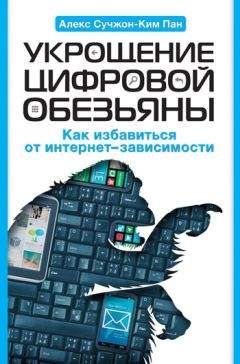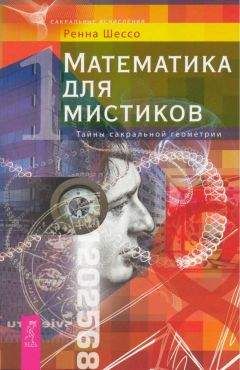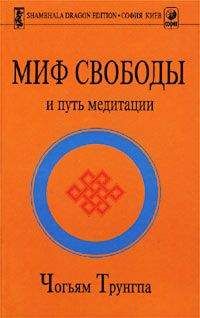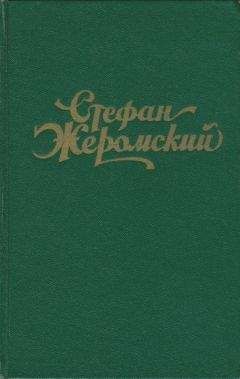В опросе 2010 года выяснилось, что 60 процентов пользователей Facebook проверяют свою страничку как минимум пять раз в день: см. «Reader Redux: How Many Times a Day Do You Check Facebook», Geek Sugar (25 March 2010). Информация о проверке сообщений на телефоне содержится в статье Antti Oulasvirta, Tye Rattenbury, Lingyi Ma, and Eeva Raita, «Habits make smartphone use more pervasive», Personal and Ubiquitous Computing 16:1 (January 2012), 105—114. Статистические сведения об использовании смартфонов взяты из статьи «Making calls has become fifth most frequent use for a Smartphone for newly-networked generation of users», O2 News Centre (29 June 2012).
Информация о значимости труда и бизнеса взята из монографии Leslie Perlow, Sleeping With Your Smartphone (Cambridge: Harvard Business Review Press, 2012). Исследования эмоциональной реакции на многозадачность содержатся в статье Zheng Wang and John M. Tchernev, «The “Myth” of Media Multitasking: Reciprocal Dynamics of Media Multitasking, Personal Needs, and Gratifications», Journal of Communication 62:3 (June 2012), 493—513.
Технология как внешний раздражитель обсуждается в работах Maggie Jackson, Distracted: The Erosion of Attention and the Coming Dark Age (Prometheus, 2008); Jonathan B. Spira, Overload! How Too Much Information is Hazardous to your Organization (New York: John Wiley, 2011); Victor M. Gonz6lez and Gloria Mark, «“Constant, Constant, Multi-tasking Craziness”: Managing Multiple Working Spheres», CHI 2004 (April 24—29, 2004, Vienna, Austria); Laura Dabbish, Gloria Mark, and Victor Gonzalez, «Why Do I Keep Interrupting Myself?: Environment, Habit and Self-Interruption», CHI 2011 (May 7-12, 2011, Vancouver, BC, Canada).
Данные о статистике потребления, использования и времени, затраченном на пребывание онлайн, взяты из работ Janna Anderson and Lee Rainie, Millennials will benefit and suffer due to their hyperconnected lives, Pew Internet and American Life Project, 2012; U.S. Census, 2012 Statistical Abstract; Aaron Smith, Mobile Access 2010, Pew Internet and American Life Project, 2010; United States Energy Information Administration, 2009.
Фраза «врожденные киборги» позаимствована из книги Andy Clark, Natural-Born Cyborgs: Minds, Technologies, and the Future of Human Intelligence (Oxford: Oxford University Press, 2004). Кларк, профессор моральной философии Эдинбургского университета, занимается исследованиями философских подтекстов нейробиологии и информационной технологии.
Информация о ночной асфиксии (ночном апноэ) содержится в работе Terry Young, Paul E. Peppard and Daniel J. Gottlieb, «Epidemiology of Obstructive Sleep Apnea: A Population Health Perspective», American Journal of Respiratory and Critical Care Medicine 165 (2002), 1217—1239.
В монографии Andy Clark Supersizing the Mind: Embodiment, Action, and Cognitive Extension (Oxford: Oxford University Press, 2010) приведена статья Andy Clark and David Chalmers «The extended mind», Analysis 58 (1998), 7-19, где впервые упоминается «расширенное мышление». Также интерес представляют превосходное, но очень техническое исследование Alva №л, Action in Perception (Cambridge: MIT Press, 2006) и его же более доступная работа Out of Our Heads: Why You Are Not Your Brain, and Other Lessons from the Biology of Consciousness (New York: Hill and Wang, 2010).
Как ни странно, употребление слова «зависимость» (addiction), применяемое нами к технологиям, уходит корнями в глубины веков. Слово «зависимость» впервые употребляет Шекспир в своей исторической хронике «Генрих V», когда архиепископ Кентерберийский упоминает о «беспутных развлеченьях» короля. Английский термин происходит от латинского слова addictus, означавшего в римском праве определенный вид порабощения: несостоятельным должникам предписывалось служить заимодавцу до полной уплаты долга. (По законам Древнего Рима злостных должников полагалось расчленять, части тела затем вручались заимодавцам в счет долга.) В современном значении слово «зависимость» стало употребляться в начале XX века по отношению к употреблению опиума и морфия. В 1980-е годы слово проникло в лексикон программистов и конструкторов: они разрабатывали персональные компьютеры, «которые с легкостью освоит даже ваша бабушка» (предприниматели Кремниевой долины не учли, что многие из этих бабушек в годы Второй мировой войны работали на военных заводах, собирая сложное оборудование для оснастки армии и флота США). Вскоре выражение «устройство, вызывающее зависимость» стало считаться похвалой, так как означало стабильное повышение потребительского спроса. Таким образом, «зависимость» от социальных медиа двояка и отражает как древнее, так и современное значение слова: «зависимые пользователи» Twitter одновременно и рабы неподконтрольной им зависимости, и зависимы от других пользователей.
Исследовательский проект Мэрилендского университета называется A Day Without Media.
Информацию об эволюции человека и использовании орудий труда можно получить в работах Timothy Taylor, The Artificial Ape: How Technology Changed the Course of Human Evolution (London: Palgrave Macmillan, 2010); Stanley H. Ambrose, «Paleolithic Technology and Human Evolution», Science 291:5509 (2 March 2001), 1748—1753; Richard Wrangham, Catching Fire: How Cooking Made Us Human (New York: Basic Books, 2010). По мнению австралийского археолога Томаса Саддендорфа, изготовление каменных орудий труда в одном месте для использования в другом месте служит доказательством способности сознания предшественников Homo sapiens к «мысленному путешествию во времени», см. Thomas Suddendorf, Donna Rose Addis and Michael C. Corballis, «Mental time travel and the shaping of the human mind», Phil. Trans. R. Soc. B (2009) 364, 1317—1324. Джейн Халлос также утверждает, что изготовление орудий труда свидетельствует о существовании способности планировать деятельность, см. статью Jane Hallos «“15 Minutes of Fame”: Exploring the temporal dimension of Middle Pleistocene lithic technology», Journal of Human Evolution 49 (2005) 155—179.
В 1990-е годы в университете штата Индиана проводились эксперименты по обучению обезьян бонобо изготовлению орудий труда, см. Kathy D. Schick, Nicholas Toth, Gary Garufi, E.Sue Savage-Rumbaugh, Duane Rumbaugh, Rose Sevcik, «Continuing Investigations into the Stone Tool-making and Tool-using Capabilities of a Bonobo (Pan paniscus)», Journal of Archaeological Science 26:7 (July 1999), 821—832.
Предшественники Homo sapiens носили одежду еще 170 тысяч лет назад, что установлено путем изучения эволюции вшей, которые приспособились жить на коже, прикрытой одеждой, см. Melissa A. Toups, Andrew Kitchen, Jessica E. Light, and David L. Reed, «Origin of Clothing Lice Indicates Early Clothing Use by Anatomically Modern Humans in Africa», Molecular Biology and Evolution 28:1 (2010), 29—32. Обувь - сравнительно недавнее изобретение, она появилась около 40 тысяч лет назад, в переходном периоде к позднему палеолиту: см. Erik Trinkaus, «Anatomical evidence for the antiquity of humanfootwear use», Journal of Archaeological Science 32:10 (October 2005), 1515—1526. История наркотиков рассмотрена в работе Richard Evans Schultes and Albert Hofmann, Plants of the Gods: Their Sacred, Healing and Hallucinogenic Powers (Шультес - один из основоположников этнопалеоботаники, а Хофманн известен тем, что синтезировал ЛСД и открыл его психоделический эффект.)
Когнитивное влияние письменности на древнегреческую цивилизацию и мышление описано в трудах Eric Havelock, The Muse Learns to Write (Yale University Press, 1986) и Walter Ong, Orality and Literacy: The Technologizing of the Word (1982; rev. ed. London: Routledge, 2002).
Микенские мечи описаны в статье Lambros Malafouris, «Is it “me” or is it “mine”? The Mycenaean sword as a body-part», в сборнике J. Robb & D. Boric, eds., Past bodies (Oxford: Oxbow Books, 2009), 115—123. Мальфурис - один из ведущих специалистов в области когнитивной археологии. Интерес представляют также его работы «The cognitive basis of material engagement: where brain, body and culture conflate», в сборнике E. DeMarrais, C. Gosden & C. Renfrew, eds., Rethinking materiality: the engagement of mind with the material world (Cambridge, UK: The McDonald Institute for Archaeological Research, 2004), 53—62; «Beads for a Plastic Mind: the “Blind Man’s Stick” (BMS) Hypothesis and the Active Nature of Material Culture», Cambridge Archaeological Journal 18:3 (2008), 401-14; «Between brains, bodies and things: tectonoetic awareness and the extended self», Phil. Trans. R. Soc. B (2008) 363, 1993—2002; Dietrich Stout, Nicholas Toth, Kathy Schick, and Thierry Chaminade,
«Neural correlates of Early Stone Age toolmaking: technology, language and cognition in human evolution», Phil. Trans. R. Soc. B (2008) 363, 1939—1949. Интерпретация оружия в когнитивной археологии содержится в статье Marlize Lombard & Miriam Noel Haidle, «Thinking a Bow-and-arrow Set: Cognitive Implications of Middle Stone Age Bow and Stone-tipped Arrow Technology», Cambridge Archaeological Journal 22:2 (2012), 237-64.
Информацию о «схеме тела» можно почерпнуть в работе Lucilla Cardinali, Claudio Brozzoli and Alessandro Farnn, «Peripersonal Space and Body Schema: Two Labels for the Same Concept?» Brain Topography: A Journal of Cerebral Function and Dynamics 21:3-4 (2009), 252-60.
О существовании призрачной вибрации телефона упоминается в работах David Laramie, Emotional and behavioral aspects of mobile phone use (Ph.D. thesis, Alliant University International, 2007); Ghassan Thabit Saaid Al-Ani, Najeeb Hassan Mohammed, Affan Ezzat Hassan, «Evaluation of the Sensation of Hearing False Mobile Sounds (Phantom Ring Tone; Ringxiety) in Individuals», Iraqi Postgraduate Medical Journal 1:1 (2009), 90—94; Michael Rothberg et al, «Phantom vibration syndrome among medical staff: a cross sectional survey», British Medical Journal 341 (2010), c6914; Michelle Drouin, Daren H. Kaiser, and Daniel A. Miller, «Phantom vibrations among undergraduates: Prevalence and associated psychological characteristics», Computers in Human Behavior 28:4 (July 2012) 1490—1496.
О соблазнах программирования рассказано в прекрасной книге Ellen Ullman Close to the Machine: Technophilia and its Discontents (London: Picador, 2012).
Характер математического мышления рассматривается в труде George Lakoff and Rafael Nbcez, Where mathematics come from: How the embodied mind brings mathematics into being (New York: Basic Books, 2000). Существует литература, содержащая подробный анализ жестов, используемых математиками для объяснения концепций и принципов: см. Martha W. Alibali and Mitchell J. Nathan, «Embodiment in Mathematics Teaching and Learning: Evidence From Learners’ and Teachers’ Gestures», Journal of the Learning Sciences 21:2 (2012), 247—286; Nathalie Sinclair and Shiva Gol Tabaghi, «Drawing space: mathematicians’ kinetic conceptions of eigenvectors», Educational Studies in Mathematics 74:3 (2010), 223— 240.
Рассказ о наборщике взят из книги John Seely Brown and Paul Duguid, The Social Life of Information (Harvard Business School Press, 2000). Рассказ о записной книжке Отто цитируется по статье Andy Clark and David Chalmers, «The extended mind», Analysis 58:1 (1998), 7-19.
Исследования Бетси Спэрроу в области транзактивной памяти описаны в работе Sparrow, Jenny Liu, and Daniel M. Wegner, «Google Effects on Memory: Cognitive Consequences of Having Information at Our Fingertips», Science 333:6043 (5 August 2011), 776—778.
С более подробной информацией о чтении, подчеркивании и ведении записей можно ознакомиться в работе Maryann Wolf, Proust and the Squid и в более специализированных исследованиях: Sarah E. Peterson, «The cognitive functions of underlining as a study technique», Reading Research and Instruction 31:2 (1991), 49—56; Rebecca Sandak, W. Einar Mencl, Stephen J. Frost, and Kenneth R. Pugh, «The Neurobiological Basis of Skilled and Impaired Reading: Recent Findings and New Directions», Scientific Studies in Reading 8:3 (2004), 273—292; Fabio Richlan, Martin Kronbichler, and Heinz Wimmer, «Functional Abnormalities in the Dyslexic Brain: A Quantitative Meta-Analysis of Neuroimaging Studies», Human Brain Mapping 30 (2009), 3299—3308.





